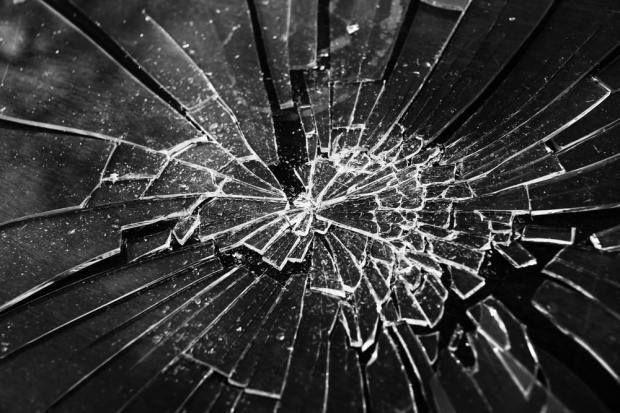Shattered Glass: The Tesla Cybertruck And Other Product Launch Stunts/#FAILS

It wasn’t supposed to happen that way.
That’s the thought that came to mind this week in the PYMNTS Bureau of Failed and Less-than-Stellar Product Launches after the supposedly bulletproof glass on the new Tesla all-electric “Cybertruck” was shattered by a metal ball thrown by the design lead, Franz Von Holzhausen, to show off the material’s strength. Talk all you will about conspiracy theories (some think the failure was planned in order to get people talking about the truck via repeat viewings of the experiment on video) but this came across as a big “oopsie moment.”
Tesla is hardly alone when it comes to failed or less-than-stellar product launches and marketing stunts. Were one inclined – and perhaps in a doctorate program – one could do an interesting survey of U.S. history via such flops and deflated hopes. We are not so inclined at PYMNTS – dissertations are not really our thing – but the Tesla shattered glass incident did get us thinking about the existential dread that must accompany other such failures.
Un-Bear-Able Stunts
Remember when Build-A-Bear was a hot fad? To gain even more sales, the company behind the product announced a marketing stunt: A stuffed animal of a child’s choice that would cost that child’s age – in other words, a five-year-old child would get a bear that would cost that child’s parents only $5.
Yeah, that didn’t work out too well.
As recounted via OurCommunityNow.com, “it almost seemed too good to be true, and parents across the country flocked to their nearest Build-A-Bear location in hopes of taking advantage of the promotion.” But demand was far too much for those retail locations to handle, leading to frustrated, angry children and more-than-annoyed parents. “Frustrated parents and impatient children alike were told that Build-A-Bear was closing all of its lines due to high demand and safety concerns. So you can only imagine how things escalated from there. Basically, it was utter chaos.”
Another example of such a glorious failure comes via the world of video games. Back in 2007, with the Nintendo Wii gaining popularity, a California radio station (radio stations being a prime source of marketing stunt fun, including on Thanksgiving) decided to award a console to a listener via a contest called “Hold Your Wee for a Wii.” The winner would be the person who could drink the most water without surrendering to bathroom urges.
You can imagine, perhaps, what happened – none of it good.
As one blog recounts, “turns out, too much water can be a very bad thing. One contestant, 28-year-old Jennifer Strange, actually died from water intoxication as a result. Suddenly, an ill-conceived PR stunt became a tragedy that not only cost a life, but cost the radio stations millions in lawsuit losses.”
Food and Beverage
It can often be a fine line between failed product and marketing stunts and failed products. That brings us to the story of New Coke.
The 1985 launch happened at the height of the supposed “Cola Wars” of the 1980s – not to be confused, of course, with the Cold War, for which the stakes were a bit higher (and where victory over the Soviet Union was obtained, as every ‘80s kid knows, by Rocky Balboa in “Rocky IV”). The buzz surrounding this change to the Classic Coke recipe made, if you will, its own marketing weather – that’s how big it was.
As Business Insider put it, “While New Coke fared well enough in nationwide taste tests before launching in 1985, it turned out those were misleading. Coke abandoned the product after a few weeks and went back to its old formula. It also gave its product a new name: Coca-Cola Classic.”
Differently minded thinkers have had some fun with this story, too: As the thinking goes, Coca-Cola wasn’t really interested in a new flavor, but merely wanted to boost the profile of its classic recipe in the battle against Pepsi. Hence, the New Coke marketing stunt. Whether you believe that or not is up to you, of course.
Quick-service restaurants (QSRs) – the scene of so much retail innovation these days – have also had their share of weird marketing and product stunts, even if they cannot always be described as a total failure.
We here at PYMNTS are thinking about the recent experience of IHOP, the famous pancake eatery. Back in 2018, IHOP – as in, International House of Pancakes – became, for a short time, IHOB (International House of Burgers). The “launch” was initially secretive – no one knew right away what the “B” stood for – and served to not only promote the restaurant’s non-breakfast offerings, but to also earn loads of free publicity and buzz. In fact, IHOP gained even more attention when it switched back to its original mission and moved into 60th-anniversary celebration mode.
All this talk about food makes us here at PYMNTS hungry for lunch, so we will leave you now to your own contemplations of product launch and marketing failures, and the values and costs of bad publicity. Just do us one favor, dear readers: Don’t go throwing anything metal through your vehicle’s windows over the weekend. It’s already been done.
